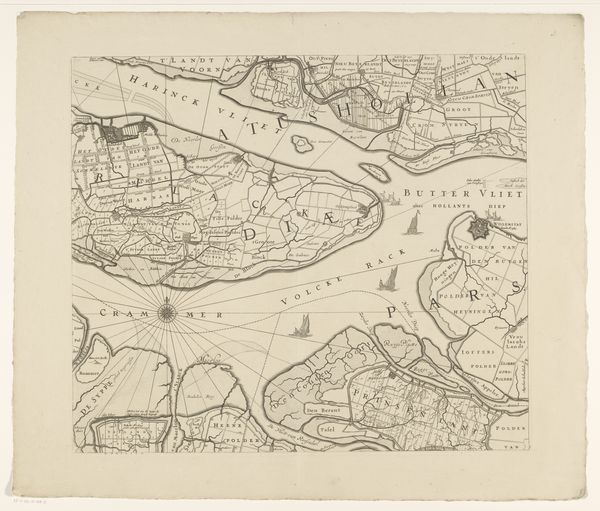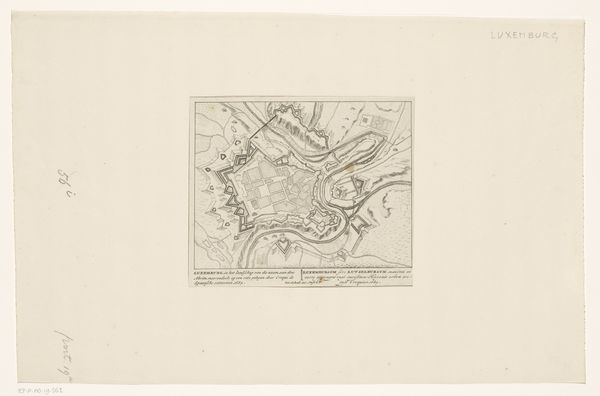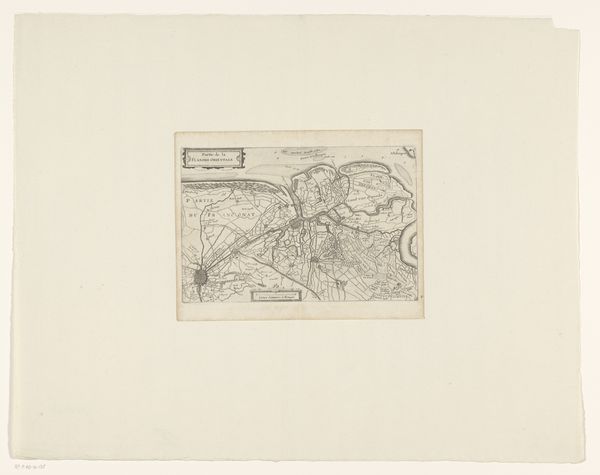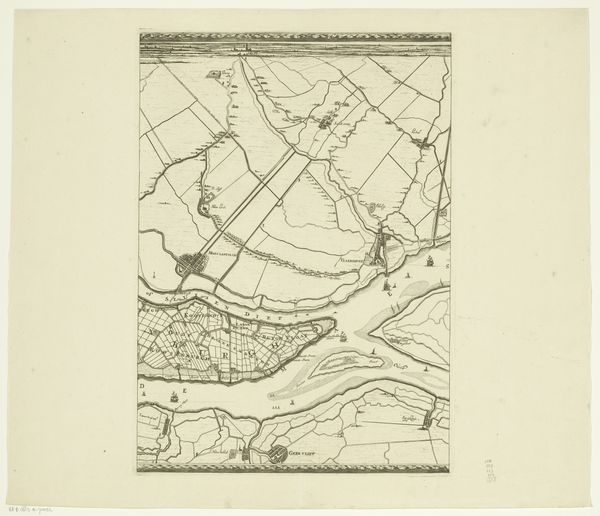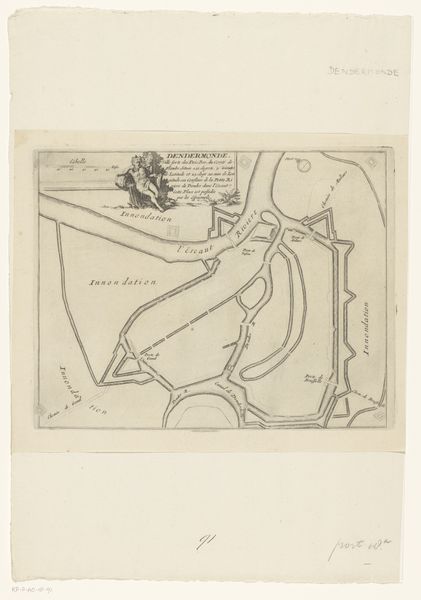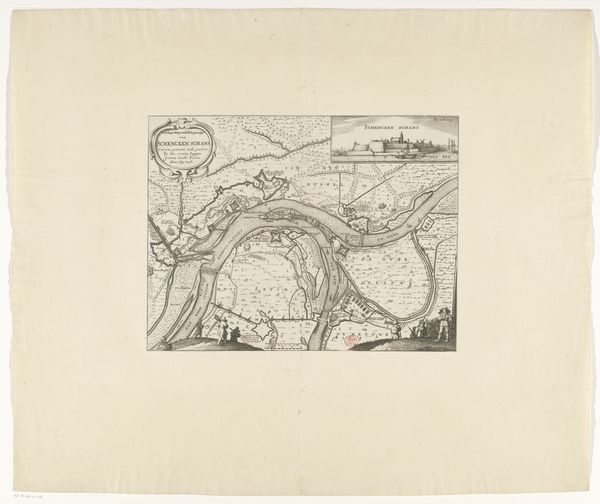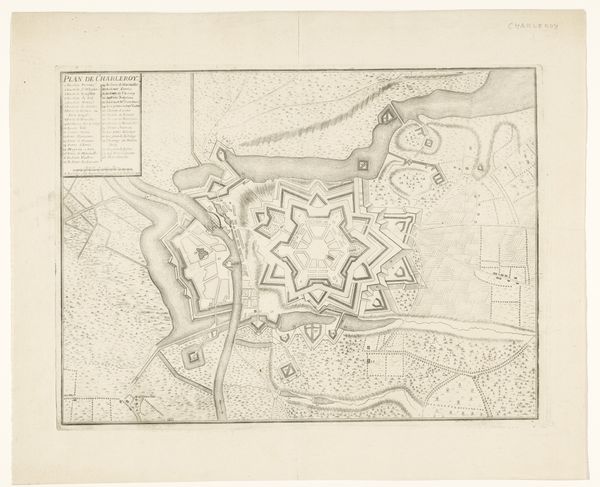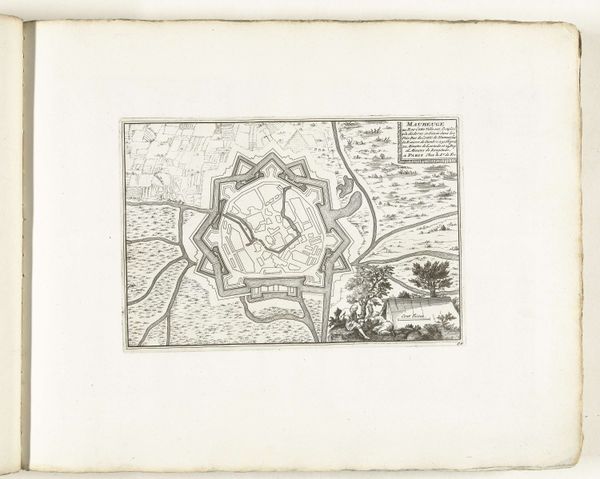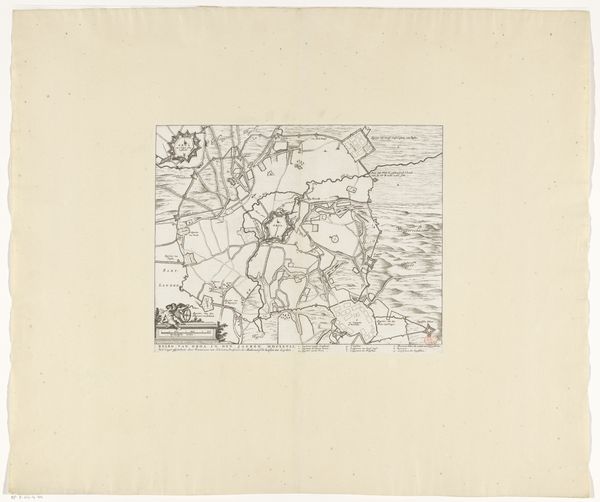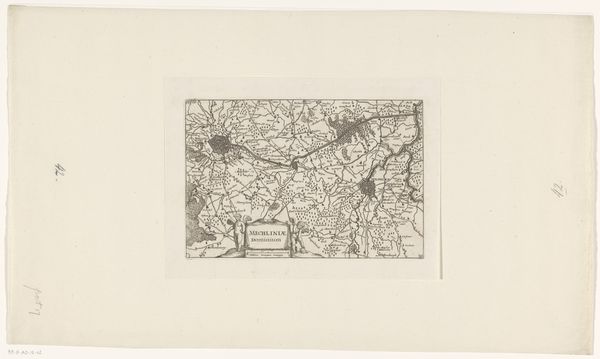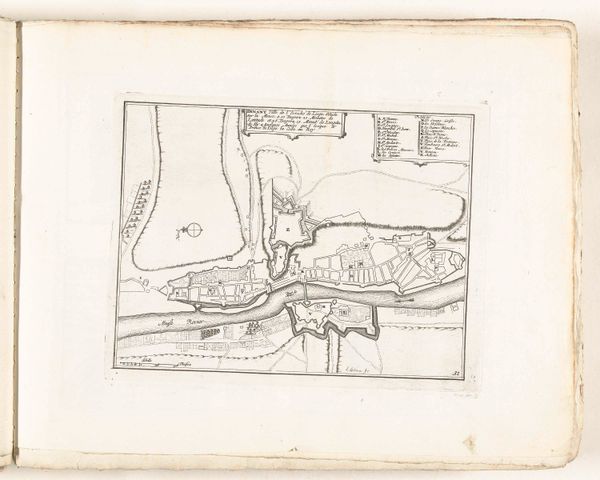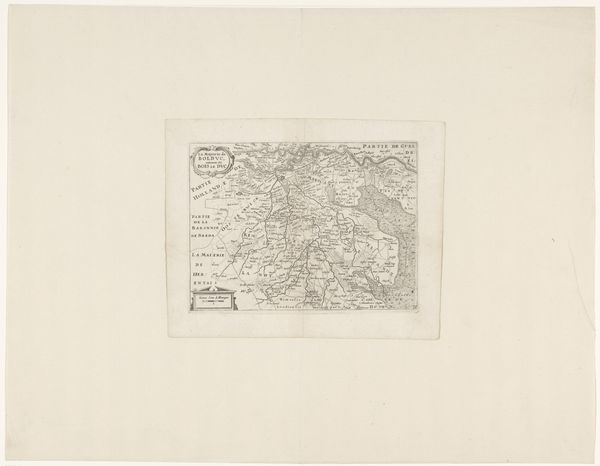
graphic-art, print, etching, engraving
#
graphic-art
#
dutch-golden-age
# print
#
etching
#
landscape
#
etching
#
engraving
Dimensions: height 500 mm, width 360 mm
Copyright: Rijks Museum: Open Domain
Editor: This etching and engraving, created sometime between 1666 and 1740, is called "Kaart van de Maas van Rotterdam tot de Noordzee (tweede deel)," by Joost van Geel. It depicts a section of the Maas river from Rotterdam to the North Sea, rendered in remarkable detail. What stands out to me is the sheer density of lines, each one carefully placed. What do you make of the composition and use of line in this print? Curator: The density you observe speaks to the print's commitment to verisimilitude. But it also transcends mere representation, doesn't it? Consider how these lines aren't uniform. They vary in weight, direction, and proximity to create textures, suggest spatial depth, and differentiate land from water. It is less a literal depiction of geographical reality and more a complex orchestration of graphic elements. Note also the emptiness of the bodies of water and how this contrasting plane of emptiness gives power to the etching itself. What could that mean? Editor: The lines definitely have a rhythm, creating varied textures and a surprising amount of depth for a flat image. I think you are right to question if it goes beyond being purely informative. What about the compass rose? Its geometry stands out from the meandering lines elsewhere. Curator: An excellent point. The compass rose serves both a practical function for navigation and an aesthetic one. Its rigid geometric form, juxtaposed with the organic shapes of the waterways, creates a visual tension. This tension, in turn, draws attention to the act of mapping itself—to the imposition of order and measurement onto the natural world. Are there any other symbols like the compass in this landscape? Editor: Well, the ships. But now that you mention the geometry in relation to nature, I think I get the picture. Curator: Precisely. What have we discovered then? Editor: That what seems to be a neutral, geographic depiction is really a play between line and texture, emptiness and density, and geometry and nature! Curator: A harmonious interplay that both serves and transcends its practical function.
Comments
No comments
Be the first to comment and join the conversation on the ultimate creative platform.
